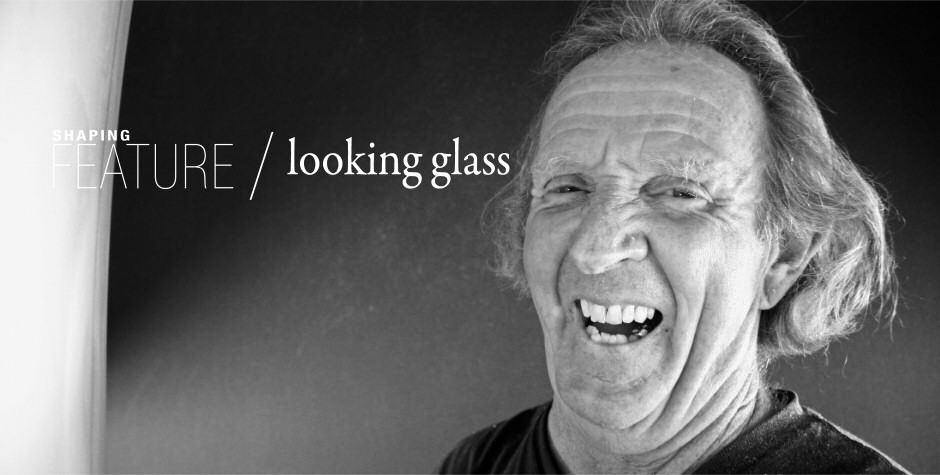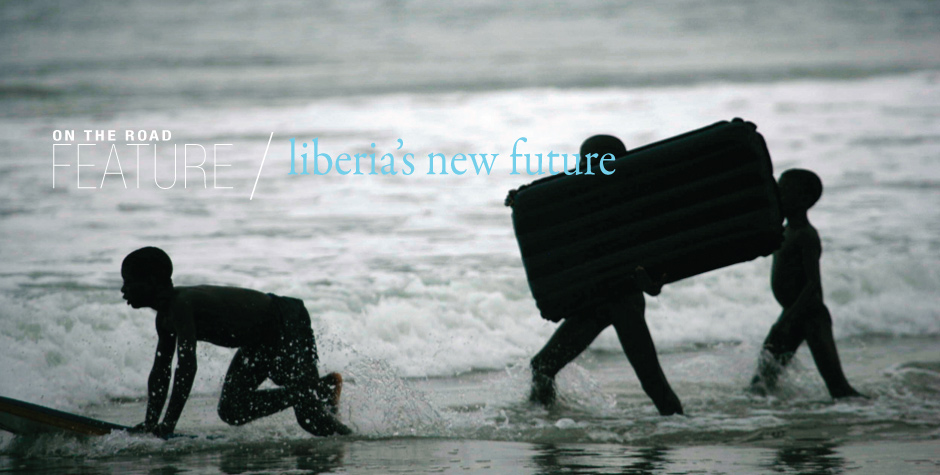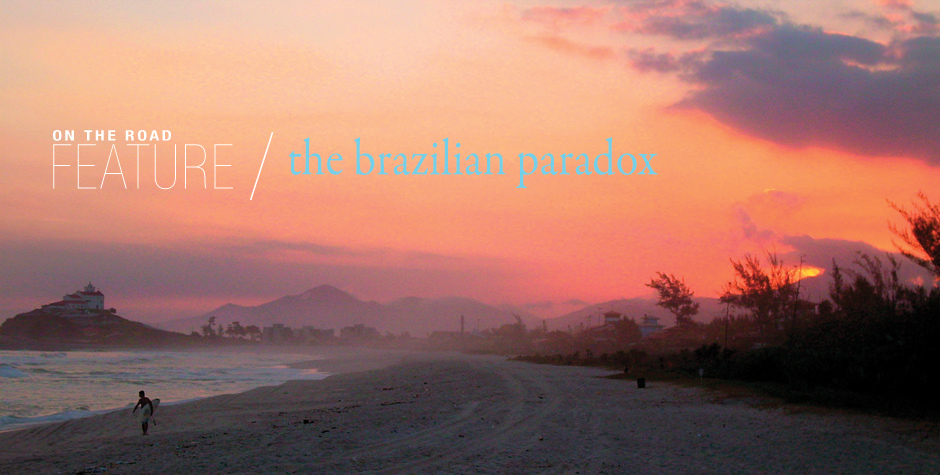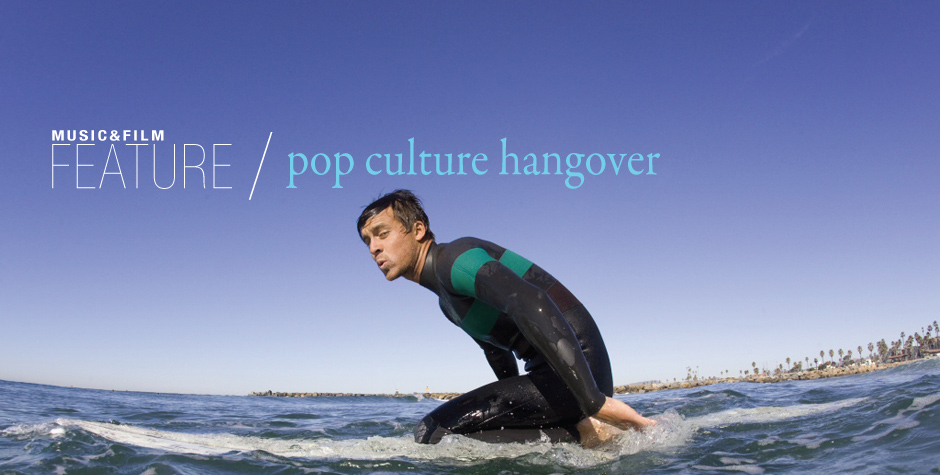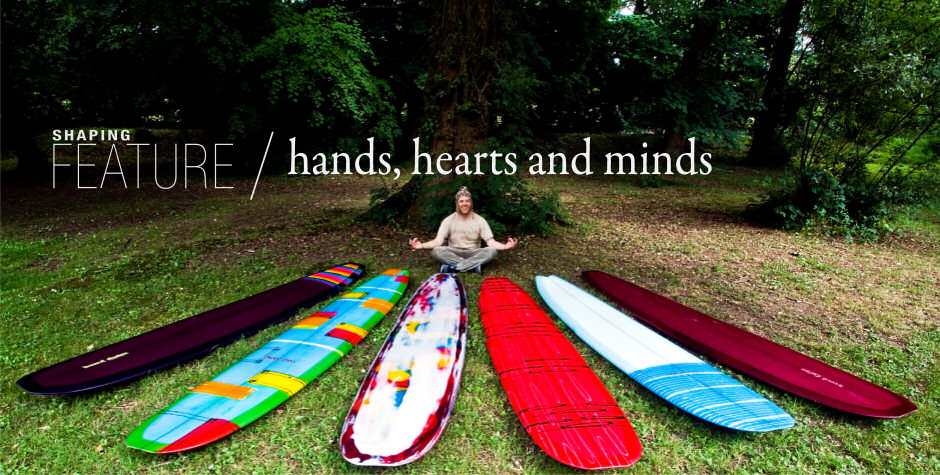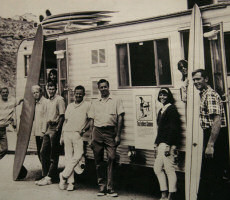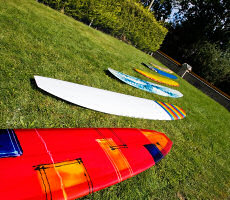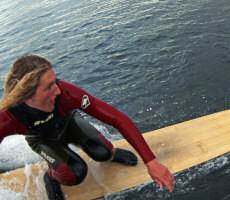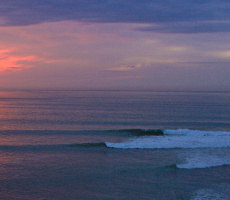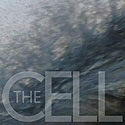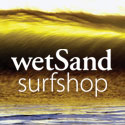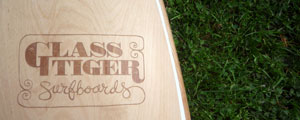The Rip Curl sustainability interview
 Driven by a poorly functioning wetsuit and my belief that longevity is the key to sustainability, I pursued an interview with Rip Curl. This is a company which flies the environmental flag high and proud, with their Rip Curl Planet project. So I pushed for some answers, and here is what they had to say. Make your own mind up.
Driven by a poorly functioning wetsuit and my belief that longevity is the key to sustainability, I pursued an interview with Rip Curl. This is a company which flies the environmental flag high and proud, with their Rip Curl Planet project. So I pushed for some answers, and here is what they had to say. Make your own mind up.
Interview with Julie Thimbaud, Rip Curl Planet Officer.
Rip Curl was founded in 1969. At what point did Rip Curl start to take the environment seriously? You say “We surf, we care” – so…
With community and environment as key company values, Rip Curl actively supports the protection of the world’s natural environment. With the creation of Rip Curl Planet foundation in 2008 (to 2010), our environmental program is continually growing stronger.
The rip Curl Planet collection is the leading environmentally conscious product in the surf industry, headed by project Resurrection, which recycles wetsuits into soles for sandals, and also features Moutainwear, boardshorts and swimwear made from recycled plastics, plus bio cotton t-shirts and the use of other recycled fabrics.
Rip Curl staff around the world also participate in Planet days, working with local environment al groups where Rip Curl has major offices to clean up, protect and revegetate beach and mountain areas. In our home town of Torquay , the planet days have run for 10 years , with staff crew responsible for successfully putting in more thant 50 000 plants indigenous to the area.
The Rip Curl foundation drived a host of environmentally initiatives troughout the company’s activities around the world, focusing on reducing waste, cutting back energy consumption and recycling/reusing materials.
We are now working on a new loyal statuts to follow projects we start with association. We will launch the new structure in April. In the words of Rip Curl CEO Olivier Cantet “While we are proud of what Rip Curl Planet has achieved, there is still much to do to keep this progression going, we are strongly committed to that!“
What are Rips Curl’s main activity areas now? Wetsuits, textiles… anything else?
Textiles
Tell us a little more about your manufacturing for each part of your business.
We had a social and chemical compliance chart. We classify all our suppliers in A, B or C categories in terms of social and chemical criteria. Less than 1% of RC products produced by C-grade socially compliant factories. 80 % of RC products are produced by B-grade chemically compliant factories.
Where are your wetsuits made?
In our own factory in Thailand.
What are they made of?
Neoprene (termic insulation) + jersey (elasticity).
E3 +: more flexible than E3.
Flash dry: instead of jersey .
Stitch with liquid tape.
F bomb and Flash bomb: mesh at the back against wind chill.
For Fall Winter 201/2012, Rip Curl introduces the Flash Bomb. We will bring on the market a wetsuit that will be touch dry in 15 minutes. This means that for your second surf your suit will feel dry. We intended to release this product for this winter, but we were not happy with the stretch and durability of the material. Therefore, we worked on a new version for another year, on which we have exclusivity for the coming years.
The Flashbomb will also feature a waterproof zip and will also use stitchless technology. This will be the main innovation for Fall Winter 2011/2012.
We will furthermore build on our success that we created with the E3 and E3+ action panels. Fall Winter 2010/ 2011 was the first season we went to market with the E3+ and the flex of the material and durability is very satisfying and will therefore create a strong base for FW2011/2012.
Another important feature that we will use is the E3+ tape. We use this tape to reinforce the seams of the suit on the inside of the Flashbomb and E Bomb. It is just so must more stretchy than traditional liquid tape and it gives the same durability to seams of the suits, so no more pinholes.
Do you operate recycling centres for your wetsuits?
You can find information regarding recycling wetsuits and wetsuits more eco friendly on this link ripcurlplanet.com
Where is your clothing made?
India, China, Indonesia, Portugal, Turkey, Taiwan, Bangladesh, Italy, France
What steps do you take to ensure ethical recruitment and production in manufacture?
We have our own chemical and social compliance. We ask every customer to sign our chart.
What harmful/harmless materials do you use in your manufacturing of clothes and wetsuits?
100% ACRYLIQUE
100% COTON
100% COTON ORGANIQUE
100% CUIR
100% E.V.A RECYCLE
100% METAL
100% MONEL
100% NE
100% NYLON
100% PLASTIQUE
100% POLYAMIDE
100% POLYCHLORURE DE VYNIL PVC
100% POLYESTER
100% POLYESTER RECYCLE
100% POLYETHYLENE
100% POLYPROPYLENE
100% POLYURETHANE
100% VINYL
100% VISCOSE
35% COTON 25% VISCOSE 15% POLYAMIDE 5% SOIE
50% ACRYLIQUE 50% LAINE
50% COTON 50% POLYESTER
50% COTON 50% VISCOSE
50% LA 50% PE
50% LAINE 31% POLYESTER 19% VISCOSE
50% LAINE 50% ACRYLIQUE
50% POLYESTER 46% COTON 4% VISCOSE
50%MONEL 50%GRIMALID
54% POLYAMIDE 33% POLYESTER 14% ELASTHANE
55% COTON 35% ACRYLIQUE 10% LAINE
57% POLYESTER 40% COTON 3% ELASTHANE
58% ACRYLIQUE 25% POLYAMIDE 17% LAINE
60% COTON 40% ACRYLIQUE
60% COTON 40% POLYESTER
60% POLYESTER 40% LAINE
60% PVC 40% POLYESTER
60%COTON 40%ACRYLIQUE
62% COTON 30% POLYESTER 8% ELASTHANE
63%POLYESTER 34%COTON 3%ELASTHANE PU
65% COTON 35% POLYESTER
65% POLYESTER 32% VISCOSE 3% SPANDEX
65% POLYESTER 35% COTON
70% ACRYLIQUE 20% LAINE 10%POLYAMIDE
70% ACRYLIQUE 30% LAINE
70% COTON 30% LIN
70% COTON 30% POLYESTER
70% POLYESTER 30% COTON
70% POLYESTER 30% LAINE
70% POLYESTER 30% LIN
70% POLYESTER RECYCLE 30% POLYESTER
70%COTON 20%ELASTHANE 5%POLYAMIDE 5%RUBBER
72% COTON 28% POLYESTER
72% POLYAMIDE 28% POLYESTER
75% POLYESTER 25% COTON
80% ACRYLIQUE 20% LAINE
80% COTON 20% POLYESTER
80% COTON 20% LAINE
80% COTON 20% POLYESTER / 100% POLYESTER
80% POLYAMIDE 20% ELASTHANE
80% POLYAMIDE 20% LYCRA
80% POLYESTER 20% COTON
82%POLYESTER 18%ELASTHANE
85% COTON 15% POLYAMIDE
85% COTON 15% POLYESTER
85%ACRYLIC 15%LAINE
86% POLYAMIDE 14% ELASTHANE
87% ACRYLIQUE 11% LAINE 2% ELASTHANE
88% ACRYLIQUE 10% LAINE 2% NYLON
90% COTON 10 % POLYESTER
90% POLYESTER 10% ELASTHANE
90% POLYESTER 10% WOOL
90% VISCOSE 10% LUREX
91% POLYESTER 9% ELASTHANE
92% POLYAMIDE 8% POLYESTER
94%POLYESTER 6%ELASTHANE
95% COTON 5% ELASTHANNE
95% POLYESTER 5% ELASTHANNE
95% POLYESTER 5% POLYAMIDE
96% COTON 4% ELASTHANE
97% COTON 3% ELASTHANE
97% POLYESTER 3% ELASTHANE
98% COTON 2% POLYESTER
98%COTON 2%ELASTHANE
99% COTON 1% ELASTHANE
A DEFINIR
ACETATE/METAL
ACETATE/ORGANIQUE
CHAUSSURE
HUILE DE PLANTE CANOLA
INJECTED/ORGANIQUE
METAL/ORGANIQUE
MONEL/ACETATE
TITANIUM/GRIMALID
What is the mission statement of Rip Curl Planet?
Rip Curl Planet is the global name for all the initiative regarding sustainable development. Several points :
Protection of the environment: The Rip Curl Planet is serving one main mission: support the protection of breaks that are key to surfing, around the world. The RCPF structure is also used by RCE for its regional environmental partnership policy: support environmental preservation and education projects in Europe (oceans & mountains). Since 2008, more than US$ 574205 were given to environmental groups (Surfrider foundation Europe, Surf Against Sewage, WWF, Moutainriders…)
Eco friendly product range : to get the Rip Curl planet label, product must be made with at least 55% of one or several approval eco friendly raw material
Have “greener events” (reduce our impact : eco toilets, neutral carbon event, clean the beach every day involving the public as we did for the Rip Curl Pro Portugal
Internal actions :
Reduce our footprint (we are going to launch the carbon assessment of Rip Curl Europe in order to reduce our greenhouse gas emissions), action plan on logistic (reduce transport by air), inform all the employees during a planet day (we close the company for a day to discuss around sustainable development and have an action), trainings.
Use and print only on recycled or FSC paper, shopping bags made of FSC paper ; reduce our boxes buyings (70% of boxes send by our suppliers are re used) , recycle plastic, metal , paper, carboard.
Do you build longevity into your products where possible to reduce the product life-cycle?
Watches: all watches are 100% water proof and a 5 years limited warranty across its range of guys and girls watches.
Wetsuits: we have the best wetsuit warranty and repair service in the industry, 3 years warranty on all stiching, 12 month warranty on all other materials and construction, on aquaban liquid tape and on knee pads.
We have a after sales service center worldwide service at the headquarter for wetsuits and watches.
For the surfwear, try to choose good quality for raw material.
How does Rip Curl Planet help the ocean environment specifically?
Support environmental groups. See all the details on Rip Curl Planet.
Do you have campaign action points, or is RCP making regular donations to other action groups?
Regular donations.
Rip Curl and employees participate every year to surfrider’s clean-ups.
What percentage of your entire portfolio is made using environmentally sound materials?
13% of rip curl product are rip curl planet one
30% of rip curl tee shirt are rip curl planet one
How does Rip Curl reduce its impact of being involved with the ASP?
We try to have greener events every year, but there is no “green” guideline coming from the ASP.
What are Rip Curls plans for the future of sustainability within the sport?
Continue to support environmental groups on a specific objective to protect our playgrounds, protect our waves – a global action plan “Save our surf”.
Reduce our carbon emissions thanks to the action plan which follow the carbon assessment we are launching.
Give formations to employees on their job with better way of working specifically on product (choose better materials with certificate).
What has Rip Curl Planet achieved since its launch?
Grants to environmental groups: more than US$ 574205.
Rip Curl Planet product range (organic cotton, recycled polyester in Moutainwear boardshort and swimwear), wetsuit recycling, Artist of the Search range.
Employee involvement and behaviour.
Logistic efforts: sea freight 90%, air freight 2%, road freight 8%.
